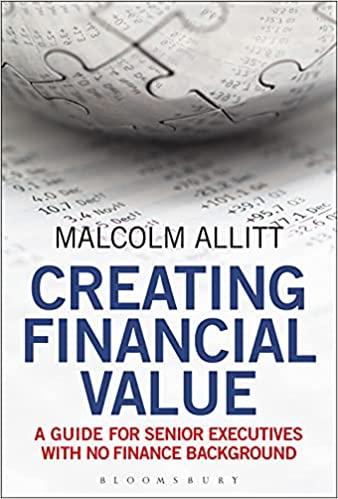Question
Pfizers Acquisition of Wyeth On Monday, January 26, 2009, Pfizer (NYSE: PFE), the worlds largest pharmaceuticals group, announced that over the weekend it had reached
Pfizers Acquisition of Wyeth
On Monday, January 26, 2009, Pfizer (NYSE: PFE), the worlds largest pharmaceuticals group, announced that over the weekend it had reached an agreement to acquire Wyeth (NYSE: WYE), one of the largest research-driven pharmaceutical and health care products companies. The deal would be the eighth-largest, M&A involving a US target, and the third largest globally in the pharma industry. Pfizer had been under pressure to re-invent itself, in particular because patents on several of its blockbuster drugs, currently generating a large fraction of the revenue, were due to expire in the coming years, meaning that revenues from sales of those drugs were expected to drop dramatically. Analysts argued that buying Wyeth would help Pfizer diversify its revenue sources and thus soften the expected blow to revenues and EPS from patent expiration. In addition, Wyeths expertise in vaccines would allow Pfizer to expand rapidly in biological medicines, a fast-growing, profitable niche in the industry that Pfizer had had little presence in. Finally, the merger would allow Pfizer to cut 15% of its global workforce, resulting in an expected reduction in operating costs totaling $4Bn over three years. Specifically, 50% of the cost savings would be realized by the end of year 1, 75% by the end of year 2, and 100% by the end of year 3.
The deal would be financed with 2/3 equity and 1/3 debt. Assume that the risk-free rate is 1.67%, the market risk premium is 8.5% and the corporate tax rate is 34%. The following table reports some financial characteristics of Pfizer and Wyeth:
Share price on Jan 16, 2009 Pfizer: 17.13 Wyeth: 38.54
No. of shares (Bn) Pfizer: 6.74 Wyeth: 1.33
Total debt ($ Bn) Pfizer:16.35 Wyeth: 0
Equity beta Pfizer: .61 Wyeth: .42
Cost of debt (%) Pfizer: 3.15% Wyeth: 4.81%
(b) Find the WACC and the unlevered cost of capital for both Pfizer and Wyeth as stand-alone firms pre-merger.
(c) Assuming that synergies in the merger have the same risk as that of Wyeths cash flows, find the WACC and the unlevered cost of capital for the synergies.
(d) What is the total value created in this deal?
(e) Is the value created in the deal (estimated in (d)) higher or lower than that in an average merger?
(f) What is the maximum cash price that Pfizer can afford to pay for Wyeth?
(g) Suppose that the actual takeover price was $50.19 in cash per share of Wyeth. How does the premium offered to Wyeths shareholders compare with that in a typical merger?
(h) When the deal was announced on Jan 26, 2009, Wyeths share price fell from $43.43 to $43.09. Why?
(i) In reality, Pfizer offered to pay with a combination of cash and shares. Specifically, each Wyeth share would be exchanged for $33 in cash and 0.985 of Pfizer shares. On Jan 27, Pfizers share price was $15.49, and Wyeths share price was $43.89. Were Wyeth shares on that day worth more or less than the value of the offer? Why?
Step by Step Solution
There are 3 Steps involved in it
Step: 1

Get Instant Access to Expert-Tailored Solutions
See step-by-step solutions with expert insights and AI powered tools for academic success
Step: 2

Step: 3

Ace Your Homework with AI
Get the answers you need in no time with our AI-driven, step-by-step assistance
Get Started


